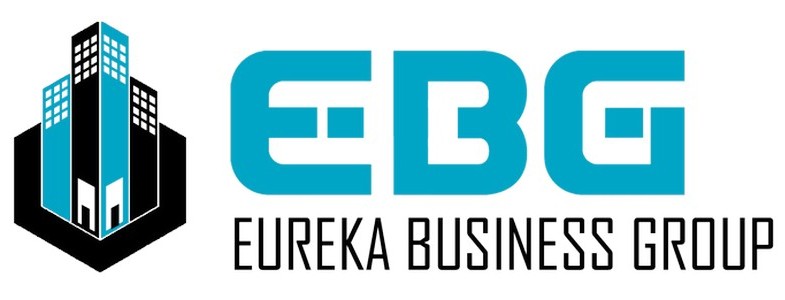- Home
- Commercial Broker Services
- Business Broker Services
- Business Owners Resources
- The Retailer’s Playbook for Leasing Your First Commercial Property
The Retailer's Playbook for Leasing Your First Commercial Property
Leasing your first commercial property is a significant milestone in the journey of any retailer. This step can propel your business to new heights, offering a physical space to showcase your brand, engage with customers, and drive sales. However, the process can be daunting and complex. This guide, “The Retailer’s Playbook for Leasing Your First Commercial Property,” will walk you through the essential steps and considerations to ensure you make informed decisions and secure a lease that benefits your business.
Understanding Your Needs
Before diving into the commercial real estate market, it’s crucial to understand your specific needs. Ask yourself the following questions:
- What type of space do I need? Consider the nature of your business. Do you need a storefront, an office space, a warehouse, or a combination of these?
- How much space do I require? Estimate the square footage based on your inventory, staff, and customer flow.
- What is my budget? Be realistic about what you can afford, including rent, utilities, maintenance, and other costs.
- Where should I be located? Location is vital for retail success. Consider your target market, foot traffic, visibility, and accessibility.
Researching the Market
Once you have a clear understanding of your needs, it’s time to research the market. This step involves:
- Identifying potential locations: Look for areas with high foot traffic, ample parking, and good visibility. Consider the proximity to complementary businesses that can drive traffic to your store.
- Analyzing market trends: Understand the current market conditions, including average rental rates, vacancy rates, and demand for retail space in your chosen area.
- Evaluating competition: Identify competitors in the area and assess how their presence might impact your business.
Engaging with a Commercial Real Estate Broker
Navigating the commercial real estate market can be challenging, especially for first-time leasers. Engaging with a knowledgeable commercial real estate broker can provide invaluable assistance. A broker can:
- Provide market insights: Brokers have access to comprehensive market data and can offer insights into market trends and property values.
- Identify suitable properties: They can help you find properties that match your criteria and budget.
- Negotiate lease terms: Brokers have experience negotiating lease terms and can help you secure favorable conditions.
- Facilitate the leasing process: From property tours to paperwork, a broker can guide you through each step of the leasing process.
Evaluating Potential Properties
When evaluating potential properties, consider the following factors:
- Location: Ensure the property is in a prime location that aligns with your target market and business goals.
- Condition: Assess the property’s condition, including any necessary repairs or renovations. Consider the cost and time required for any improvements.
- Layout and design: Evaluate the property’s layout and design to ensure it suits your business needs. Consider factors such as floor plan, accessibility, and branding opportunities.
- Amenities: Consider the amenities offered, such as parking, security, and utilities. Ensure they meet your operational needs.
- Lease terms: Review the lease terms carefully, including rent, lease duration, renewal options, and any additional costs.
Negotiating the Lease
Negotiating the lease is a critical step in the leasing process. Here are some tips for successful lease negotiations:
- Do your homework: Understand the market rates and comparable leases in the area. This knowledge will give you leverage in negotiations.
- Seek professional advice: Consult with your broker and possibly a real estate attorney to ensure you understand all terms and conditions.
- Negotiate favorable terms: Aim to negotiate favorable lease terms, including rent, lease duration, renewal options, and any additional costs. Be prepared to compromise but also know your limits.
- Consider future growth: Ensure the lease terms allow for potential expansion or relocation if your business grows.
Understanding Lease Types and Terms
Commercial leases can vary significantly in their terms and conditions. Understanding the different types of leases and key terms can help you make informed decisions:
- Gross Lease: The landlord covers most expenses, including property taxes, insurance, and maintenance. You pay a fixed rent amount.
- Net Lease: You pay a base rent plus a portion of the property taxes, insurance, and maintenance costs. There are three types: single net (N), double net (NN), and triple net (NNN).
- Percentage Lease: You pay a base rent plus a percentage of your gross sales. This type is common in retail properties.
- Common Area Maintenance (CAM): CAM charges cover the upkeep of shared spaces like lobbies, restrooms, and parking lots. Be sure to understand how these charges are calculated.
Preparing for the Move
Once you’ve secured a lease, it’s time to prepare for the move. This stage involves:
- Planning the layout: Design the interior layout of your space to optimize flow and functionality. Consider the placement of merchandise, checkout counters, and customer service areas.
- Coordinating renovations: If renovations are needed, coordinate with contractors and ensure all work is completed on time and within budget.
- Setting up utilities and services: Arrange for utilities, internet, phone services, and any other necessary services well in advance of your move-in date.
- Marketing your new location: Announce your new location to your customers through various marketing channels. Plan a grand opening event to attract attention and drive traffic to your store.
Moving In and Opening Your Doors
The final step is the move-in and opening of your store. To ensure a smooth transition:
- Organize the move: Create a detailed moving plan and timeline. Hire professional movers if necessary to ensure everything is transported safely.
- Train your staff: Ensure your staff is trained and ready to operate in the new space. Provide them with clear instructions and support.
- Test your systems: Before opening, test all systems, including point-of-sale systems, security systems, and utilities, to ensure everything is functioning correctly.
- Celebrate the opening: Plan a grand opening event to generate excitement and attract customers. Offer special promotions or discounts to encourage sales.
Conclusion
Leasing your first commercial property is a significant step that requires careful planning, research, and negotiation. By understanding your needs, researching the market, engaging with a commercial real estate broker, evaluating properties, negotiating the lease, and preparing for the move, you can set the foundation for a successful retail business. Remember, this is just the beginning of your journey as a retailer. With the right strategy and dedication, your business can thrive in its new commercial space.



